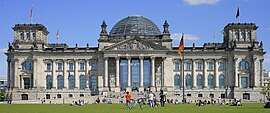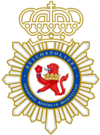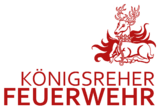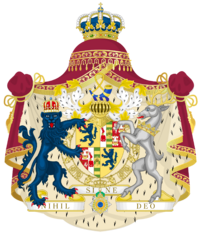Königsreh
Königsreh | |
|---|---|
| Free Imperial City of Königsreh Freie Reichsstadt Königsreh | |
| Nickname: "The Golden City" | |
| Motto: "Unser ist die Krone" ("Ours is the Crown") | |
| Country | |
| State | Kronlande |
| Government | |
| • Mayor | Paul Choldwig (RU) |
| Area | |
| • Capital city | 428.9 km2 (165.6 sq mi) |
| Elevation | 28 m (85.30 ft) |
| Population (2018) | |
| • Capital city | 3,231,326 |
| • Metro | 4,311,177 |
| Demonym(s) | Königsreher (m), Königsreherin (f) |
| Time zone | UTC+2 (EST) |
| Postal code | 01 |
| Area code | 536 |
| Vehicle registration | KR |
Königsreh or Konigsreh (Hesurian: [ˈkøːnɪçsˌreh]; lit. King's Deer), is the capital and second-largest city of Mascylla. It is populated by 3,231,326 (2017) inhabitants, which makes it one of the most populous city propers in Berea after Aniarro, Ulrich and Flussmund. The city and its surrounding adjacent villages is one of Mascylla's 18 principalities, the Kronlande, and it is surrounded by the states of Eustria, Folnery and Shwesia. Together with Flussmund up north it forms the largest metropolitan area in the country, referred to as the statistical Königsreh-Flussmund Greater Metropolitan Area (Metropolregion Königsreh-Flussmund).
A global city and hub according to the Newcott World Cities Index, Königsreh is described as one of the world capitals of culture, finance, and media, and exerts a significant force upon commerce, entertainment, art, fashion, sports, technology and research, education, politics, and tourism. Home to the headquarters of the Assembly of Nations, Königsreh is an important center for international diplomacy. The city lies on the banks of the River Blaugold, which flows through the city centre towards the Flussmund Bight. Königsreh's main topographical topographical features are the many smaller lagoons and lakes in the western and southern boroughs, all leading to the Blaugold, the largest of which is the Weider River. Due to its location in the Great Mascyllary Plain and Königsreh Bay, Königsreh receives a temperate seasonal climate. Nearly one-third of the city's area is composed of forests, parks, rivers, canals, and lakes.
First mentioned in a road map of the 15th century and situated at the crossing of two important trade routes, the village in the past known as Schwülpt, became a minor political location and population centre. Its major importance was archieved through the foundation of the city of Königsreh by King Lukas I himself, after the construction of a national capital favored instead of Langquaid required a suitable location. Königsreh quickly evolved into a large metropolitan area, the fourth-largest one in Berea by the 1920s. The city served as the historical capital of the Mascyllary Kingdom (1793-1923), the May Republic (1923-1924), and the Crowned Republic of Mascylla to this day.
Königsreh is an internationally recognized city of culture, politics, sciences, and general media. Its economy is based on the presence of high-tech start-ups and the service sector, encompassing a diverse set of innovative industries, research facilities, media corporations and scientific centres. Königsreh serves as a multinational hub for traffic, most notably through Königsreh–Albert Polschnitz Airport, and has a complex rapid transit network. The historical city centre is a popular tourist destination, with renowned universities, orchestras, museums, and galleries. Significant industries also include biochemical and biomedical engineering, IT tech, biotechnology, bionics, and aviation technology. Its zoological institutes, encompassed in the Zoologischer Park, is the most frequently visited zoo in Berea. The city is well known for its multiculturalism, nightlife, contemporary lifestyle, and high social attractiveness; for example it hosts the internationally famed Landherrenallee. It scores a high standard of living and has experienced a drastic rise in national as well as international popularity.
History
Geography
Location
Topography
Parks and nature
Climate
City administration
Demographics
Cityscape and architecture
Boroughscape of Köpenick
Main article: Köpenick
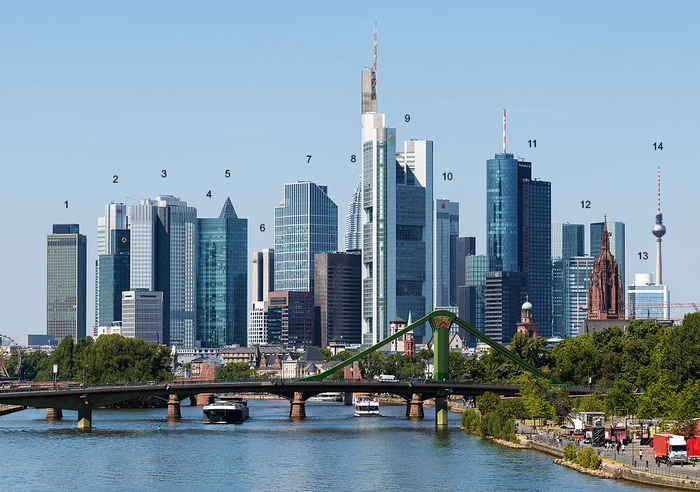
1 EU Steuber Complex · 2 Großklosterstraße 34 · 3 Alestan Center · 4 Lemge Tower · 5 Messalt Tower · 6 Culture Forum · 7 Grunestraße 2 · 8 Headquarters of the Assembly of Nations · 9 Magnall Tower · 10 Triad Tower · 11 Blaugold View · 12 Sindelmähner Gate · 13 New Radio Building · 14 Königsreh Signal Tower
Politics
As the Mascyllary capital

The Reichssenat of the Mascyllary Kingdom decided in 1794, one year after the unification of Mascylla, in the so called "Capital Order" (Hauptstadtbeschluss) that a newly erected city as the capital would house the Reichssenat and the Reichsrat as well as the Government of Mascylla. Therefore, Langquaid was relinquished of the title of capital city and Königsreh determined as the new seat of government.
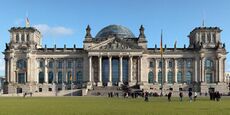

Since 1800 the Monarch maintains his or her primary seat in the Königsreh Palace and Hohenehr Palace. Subsequently, in 1803, most of the government and authorities relocated from Langquaid to Königsreh. The Reichsrat, Reichssenat and Mascyllary government have since then begun operating in the Mascyllary capital. In 1810 the new Kronenrat building was inaugurated and first obtained by Prime Minister Wilhelm von Stenreck. Other government buildings were erected between 1810 and 1813; the latest government agency to relocate to Königsreh was the DSA after its new headquarters was erected in 2015. All 16 ministries and agencies of the Kronenrat have their mean seat in Königsreh, but also operate secondary seats in Langquaid. Most of its government official releases (Reichsgesetzschrift) and statements (Reichsankündigungen) are still being released in the other city to this day, and no high court is located in Königsreh, but in Augusthal, Langquaid and Lehpold.
Most sovereign states have their embassy to Mascylla in Königsreh, while the 21 federal states and free cities have additional representative offices. International organisations such as the Telmerian Union, UPESCH and BDTA also maintain offices. A large number of diplomatic representations are located in the Diplomatenviertel and on the Lorenzinsel in the city centre.
As the seat of government of the largest economy in Berea, Königsreh is one of the influential and sought after centres of Berean politics. Party headquarters, labour and trade unions, foundations, organisations and lobby representations of companies are all maintaining seats and offices in the city. State visits and receptions on every political level as well as important celebrations dominate the political schedule of Königsreh.
As the state of the Kronlande
Königsreh as an Imperial Free City (Freie Reichsstadt) is an autonomous federal state in Mascylla, the Kronlande. The Kronlande solely encompasses the City of Königsreh (Stadt Königsreh) per definition. The state itself is divided into seventeen boroughs, while each of them are further subdivided into neighbourhoods.
The parliament of the state that exercises legislative power is the House of Deputies of Königsreh (Abgeordnetenhaus von Königsreh), in which deputies of the SDP, RU, MDP, NDU, Independent Voters and VP are seated. As of 2022, the government is led by the SDP, in coalition with the MDP and RU. The Senate of Königsreh (Königsreher Senat), consisting of the Mayor (Bürgermeister) and ten additional senators, makes up the government of the state (Landesregierung). While the Mayor is responsible for political affairs of the state, the ceremonial head of state is the currently reigning monarch since 1803. The senator administrations have similar tasks as its counterparts in the Mascyllary government.
City services
The state of the Kronlande as well as every other state and free state in Mascylla is served by the Imperial Police (Reichspolizei). It is subdivided into eight local directives, as well as the Kronlande Criminal Agency (Kriminalamt Kronlande). The police service employs around 21,500 people, 17,900 of which officers and the remaining 3,600 support staff and administration, making it the largest localized police service in Mascylla.
The Königsreh Fire Department (Königsreher Feuerwehr), being founded in 1870, is the oldest continuous fire department of Mascylla. With its 3,980 employers and up to 31 fire stations it is also the biggest urban fire department in the country. It is supported by 50 voluntary fire brigades with approximately 1,220 active unsalaried members and partly made up of the Städtisches Hilfswerk (SHW) in Marienfelde.
Coat of arms and flag
The coat of arms of Königsreh depicts a sitting, white deer with a golden antler and golden hooves in a golden shield. Sometimes the crown of the Mascyllary monarchs is depicted to crown the coat of arms to symbolize the unique status of the city. The deer is the namesake of the city and is derived from the heraldry of the House of Ahnern and therefore the first king who founded the city, Lukas I of Mascylla. The colours of the shield, green and yellow, reflect the city's abundance in nature and its royal status, respectively.
The state flag of Königsreh is composed of two horizontal stripes of green above and yellow below. It is a continued design with few stilistic differences since it was first flown in 1862. Previously, the flag featured the coat of arms in between the two stripes on a white background, but it was redacted since it appeared too similar with the flag of Eustria and was too complex to identify from far away.
The uniformed statute of waving flags (in front of state authority buildings):
Flag of the Telmerian Union
Flag of the Berean Defence Treaty Association (for specific events and buildings)
Urban partnerships
The city of Königsreh maintains city partnerships with ![]() Lilienburg City, Lilienburg (1947),
Lilienburg City, Lilienburg (1947), ![]() Tinz am Sigmund, Temaria (1966),
Tinz am Sigmund, Temaria (1966), ![]() Aniarro, Lavaria (1968),
Aniarro, Lavaria (1968), ![]() Kristianshavn, Norden (1971),
Kristianshavn, Norden (1971), ![]() Ulich, Dulebia (1985),
Ulich, Dulebia (1985), ![]() Toulogne, Sarrac (1988), and
Toulogne, Sarrac (1988), and Sydenham, Falland (1988).
Infrastructure
Public transport
Further reading: Königsreh U-Bahn
Motor traffic
Air traffic
Further reading: Königsreh–Albert Polschnitz Airport





